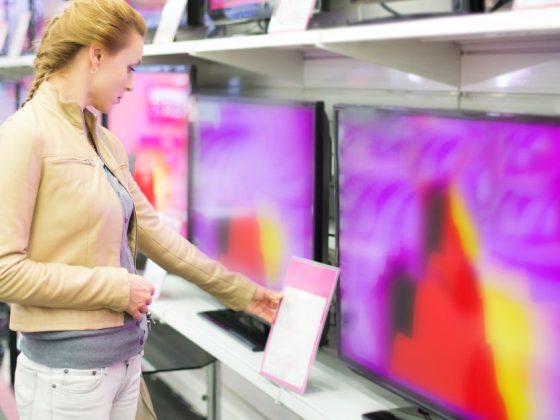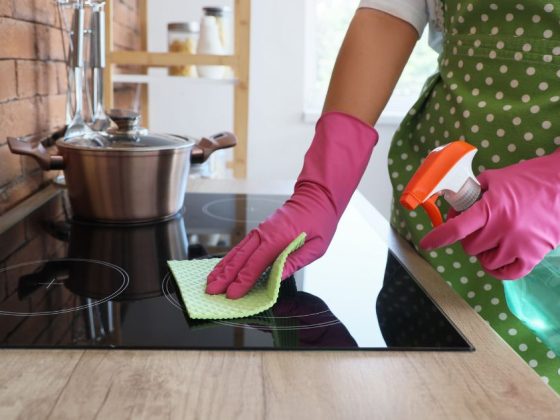Picture this: You walk through the front door after a long day. The hallway lights glow softly to welcome you. Your favourite playlist hums gently in the background. The thermostat has already warmed the house to your perfect setting, and the kettle has just started to boil.
This isn’t a sci-fi dream reserved for high-tech mansions. It’s today’s reality — and you can make your home smart without spending a fortune. With a few clever choices and budget-friendly tools, you can turn your space into a connected, comfortable, and energy-saving haven that feels tailor-made for you.
In this guide, we’ll walk through practical, wallet-friendly ways to transform your home into a smart one — step by step. You’ll learn what to prioritise, what to skip, and how to get the most out of every device. Think of it as your smart home starter kit, written with a cup-of-tea-by-the-fire feel.

1. Why Make Your Home Smart? (And Why It’s Easier Than You Think)
Smart homes aren’t about showing off the latest gadgets — they’re about comfort, convenience, and saving money. If you’ve ever wished you could turn off the lights from bed, warm the house before you wake, or check your front door while you’re away, then you already know the appeal.
According to Grand View Research, the global smart home market was worth nearly $128 billion in 2024, and it’s projected to quadruple by 2030. That’s because more people are discovering that even small changes — a smart bulb here, a voice-controlled plug there — can make life smoother and more energy-efficient.
Did You Know?
A smart thermostat can cut your heating costs by 8–10% per year, according to the U.S. Department of Energy. That’s not just smart living — that’s smart saving.
2. Start with a Plan: Small Steps, Big Results
Before you click “add to cart,” take a breath. Making your home smart isn’t about buying everything at once — it’s about choosing devices that actually make your daily life easier.
Ask Yourself These Questions
-
What do I want to improve — comfort, security, or energy efficiency?
-
How much am I comfortable spending this year? (Even $100/£80 can go a long way.)
-
Do I rent or own my home? (Renters can stick to non-permanent, plug-in devices.)
-
Will I need products that work in both the U.S. and U.K.? (Look for universal voltage options.)
Smart Tip:
Start with one room — maybe your living room or bedroom. It’s easier to test features, and you’ll quickly see where automation adds value.
3. Choose Your Smart Home “Language”
Most smart devices belong to an ecosystem — like Apple Home, Google Home, or Amazon Alexa. Think of these ecosystems as “languages” your devices speak. The key is choosing one and sticking to it.
Popular Ecosystem Options
| Ecosystem | Ideal For | Typical Devices |
|---|---|---|
| Google Home | Android users, affordable options | Nest Mini, Google Hub, Chromecast |
| Apple HomeKit | Apple households | HomePod Mini, iPhone/iPad integration |
| Amazon Alexa | Budget-conscious multitaskers | Echo Dot, Fire TV, Ring Doorbell |
Mixing too many systems can get confusing — it’s like having friends who don’t speak the same language at dinner. Keep it simple and unified.
4. Start Smart (and Cheap): Devices That Give the Most Bang for Your Buck
a. Smart Plugs: The Little Gadget That Changes Everything
Smart plugs are often the unsung heroes of smart living. Plug one into your wall, connect it to Wi-Fi, and suddenly that old lamp or coffee maker becomes voice-controlled.
Example: Say, “Alexa, turn on the lamp,” or schedule it to switch off at midnight. No rewiring, no fuss — just instant convenience.
Budget range: $15–25 / £12–20
Best for: Lamps, fans, space heaters, or anything with a simple on/off switch.
Smart Tip: Start with one smart plug in your bedroom or living area. You’ll be amazed at how quickly you’ll want one in every room.
b. Smart Bulbs: Create Mood and Magic
Lighting sets the mood of your home — and smart bulbs take that to the next level. You can dim, colour-change, or schedule them from your phone.
Budget range: $15–30 / £12–25 per bulb
Try this: Set warm amber tones for cozy evenings, or bright daylight for focused work hours.
Real-Life Story:
“I started with just one smart bulb in the living room,” says Hannah from Manchester. “Now I’ve got a morning routine that fades the lights up gradually while my kettle switches on. It feels like my flat knows me.”
c. Smart Speakers: Your Voice-Activated Assistant
A smart speaker, like the Amazon Echo Dot or Google Nest Mini, acts as the heart of your system. It listens, responds, and controls your devices with simple voice commands.
You can ask for weather updates, reminders, or even recipes — all while managing your lights and plugs hands-free.
Budget range: $40–60 / £35–50
Pro tip: Look out for holiday sales — these devices often drop below $30/£25 during promotions.
d. Smart Thermostats: Comfort That Pays You Back
Heating and cooling are where smart homes truly shine. Smart thermostats learn your habits, adjust automatically, and save on energy bills.
If you rent, try portable radiator controllers or plug-in heater plugs. If you own, consider a full thermostat upgrade like Google Nest or tado°.
Budget range: $120–250 / £100–200
Estimated yearly savings: Around 8–12% on heating/cooling bills.
Did You Know?
The average UK household spends about £1,200 a year on energy. A smart thermostat can shave up to £100 off that without sacrificing comfort.
e. Smart Cameras & Doorbells: Affordable Peace of Mind
Home security doesn’t have to involve contracts or expensive installations. Many smart cameras now work wirelessly and store footage in the cloud.
Budget range: $80–150 / £70–130
Brands to explore: Blink, Eufy, Wyze, Ring.
Use them to see who’s at your door, check deliveries, or get alerts when you’re away. For renters, these devices can often be placed with simple adhesive mounts — no drilling needed.
5. Build Your First Smart Routine
Once you’ve got two or three smart devices, it’s time for the magic: automation.
Here’s how to create your first “scene” or routine:
-
Pick a trigger: Time, motion, or voice command.
-
Choose the actions: Lights dim, plug turns off, thermostat adjusts.
-
Set a mood: Name your routine — “Good Morning,” “Movie Night,” or “Bedtime.”
-
Test and tweak: Adjust brightness or timing until it feels natural.
Example:
Morning Routine: Lights brighten gradually → Speaker plays morning playlist → Kettle smart plug turns on.
Evening Routine: Lights dim to warm tones → TV plug turns off → Thermostat lowers 2°C → Security camera arms.
Congratulations — you’ve just learned how to truly make your home smart, not just filled with gadgets.
6. How Much Does It Really Cost?
| Smart Setup | Devices Included | Estimated Cost (USD/GBP) |
|---|---|---|
| Beginner’s Start | Smart plug + bulb + speaker | $70 / £60 |
| Energy-Saver’s Kit | Add thermostat + extra bulbs | $200 / £160 |
| Home Guardian Bundle | Add camera + motion sensors | $300 / £240 |
| Full Comfort Setup | Mix of all above + smart blinds | $500 / £400 |
Remember: you don’t need to do it all at once. Building a smart home is like growing a garden — plant what you can afford now, then add more when you’re ready.
7. Real-Life Smart Home Transformations
Sarah’s Story (UK, Rented Flat)
“I wanted to make my home smart without upsetting my landlord,” says Sarah, who lives in a London studio.
She started with a £18 smart plug and a £22 smart bulb. Within weeks, she’d built morning and night routines through Alexa. Later she added a battery-powered security camera.
“I feel safer, and my flat finally works around me — not the other way round,” she says.
James’ Story (US, Small Homeowner)
James, from Portland, invested $300 over six months. A smart thermostat, speaker, and bulbs helped cut his energy use by 8%.
“The biggest surprise wasn’t the savings,” he says. “It’s that my house feels alive. I can’t imagine going back.”
8. Common Pitfalls to Avoid
| Mistake | What Happens | Smart Fix |
|---|---|---|
| Buying too much too soon | Overwhelmed and overspent | Start small — expand gradually |
| Mixing ecosystems | Devices don’t connect | Stick to one platform |
| Weak Wi-Fi | Lagging devices, dropped connections | Boost signal with a Wi-Fi extender |
| Ignoring security | Vulnerable devices | Update firmware, use strong passwords |
| Focusing on “cool” over “useful” | Wasted money | Choose devices that solve daily annoyances |
Smart Tip: When in doubt, ask: Does this make my home more convenient, secure, or efficient?
If not, save your money.
9. Seasonal and Lifestyle Smart Moves
Winter Warm-Up
-
Schedule heating to turn on 15 minutes before you wake.
-
Use smart plugs to power heaters only when needed.
-
Create a “Cozy Mode” scene: fireplace light, low lamp glow, and soft music.
Summer Cool-Down
-
Program fans or portable AC units to start before you get home.
-
Use motion sensors to turn off cooling when rooms are empty.
-
Try smart blinds to block midday heat.
For Busy or Travelling Professionals
-
Use “Away Mode” to switch lights on and off randomly to mimic occupancy.
-
Check your front door camera while abroad.
-
Automate pet-feeding or lamp lighting remotely.
10. The 7-Day Smart-Home Challenge
Try this fun, one-week journey to make your home smart — step by step.
| Day | Task |
|---|---|
| 1 | Install one smart plug and connect it to your phone. |
| 2 | Add a smart bulb and experiment with lighting scenes. |
| 3 | Link both to a voice assistant. |
| 4 | Create a bedtime routine (lights off, plug off). |
| 5 | Try a smart thermostat or test energy-saving mode. |
| 6 | Set up one “Away” automation for security. |
| 7 | Reward yourself — enjoy your first week of smart living! |
Final Thoughts: Smart Homes, Smarter Living
Making your home smart doesn’t mean filling it with gadgets — it means creating a home that listens, learns, and responds to you. Whether you’re turning on a lamp with your voice or saving money on heating, every small upgrade adds up to something bigger: ease, comfort, and peace of mind.
You don’t need a massive budget or a tech degree. You just need curiosity, patience, and a plan. Start with one plug, one bulb, or one scene. Before long, your home will quietly begin to reflect your rhythm, your style, and your life — exactly as it should.
Because in the end, the smartest home is the one that makes you feel most at home.














